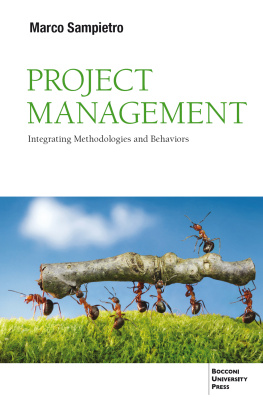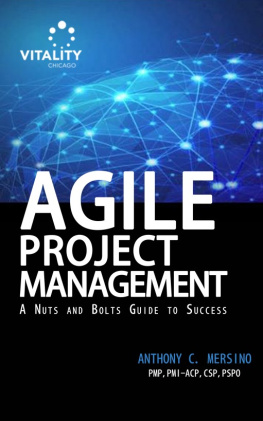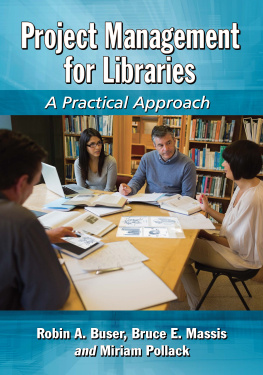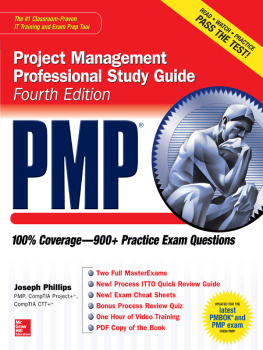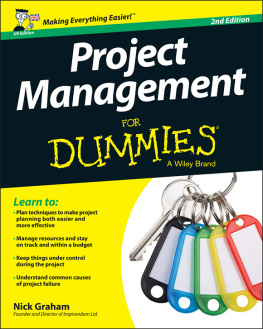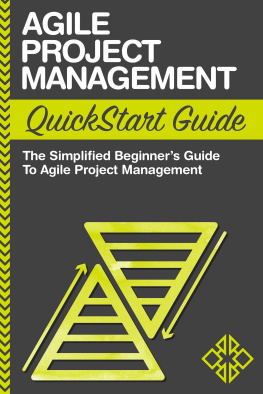Project Management
Project management is a vast discipline that over the years has come to encompass content from a variety of fields. The book identifies the factors that are crucial to good project management and emphasizes the importance of integrating the methodological and organizational aspects of project management. Knowing how to manage projects provides companies with an important competitive advantage, as shrinking product life cycles reduce the time to return on investment, which means less tolerance for errors.
From the main characteristics of projects to the identification of the key factors for their success, from the concept of life cycle to the behaviors that accompany each phase, from stakeholder management to the management of physical and economic resources, the book illustrates every relevant aspect providing numerous examples and concrete cases.
A particularly extensive chapter is devoted to the Agile approach, describing its inception, its various applications, and some key operational practices. The volume is completed by an in-depth focus on the management of multi-project environments and a checklist for assessing the robustness of a project at each stage of its life span.
Marco Sampietro
is Associate Professor of Practice of Leadership, Organization and Human Resources at SDA Bocconi School of Management. He also teaches Project Management and Agile Management at the Department of Management and Technology of Bocconi University.

Marco Sampietro
PROJECT MANAGEMENT
Integrating Methodologies and Behaviors
Cover: Cristina Bernasconi, Milan
Typesetting: Laura Panigara, Cesano Boscone (MI)
Copyright 2022 Bocconi University Press
EGEA S.p.A.
EGEA S.p.A.
Via Salasco, 5 - 20136 Milano
Tel. 02/5836.5751 Fax 02/5836.5753
All rights reserved, including but not limited to translation, total or partial adaptation, reproduction, and communication to the public by any means on any media (including microfilms, films, photocopies, electronic or digital media), as well as electronic information storage and retrieval systems. For more information or permission to use material from this text, see the website www.egeaeditore.it
Given the characteristics of Internet, the publisher is not responsible for any changes of address and contents of the websites mentioned.
First edition: July 2022
ISBN Domestic Edition | 978-88-99902-92-6 |
ISBN International Edition | 978-88-31322-55-3 |
ISBN Digital Domestic Edition | 978-88-238-8455-7 |
ISBN Digital International Edition | 978-88-31322-60-7 |
Table of Contents
To Valentina, Sienna, Andrea
My beautiful family
Background
Project management is nowadays a broad discipline, and probably a few thousand pages would not be enough to touch all the topics related to it with adequate depth. Over the years, project management has not only developed original contents, but it has also embraced contents coming from other fields, which have proved to be relevant.
In the following pages, therefore, I have tried to distil the key elements of effective project management, starting from the observation of how important it is to oversee both methodological and organizational aspects. Usually, these two perspectives are the subject of separate sections or chapters, with few or no points of contact. The peculiarity of this book is instead the integration between the two dimensions. Project management methodologies are, in fact, used by people, and the way they interpret, use, and disseminate them has a great impact on their effectiveness. Separating methodologies from people would not represent how project management in the real world works.
The book lends itself to different levels of reading. Project management fundamentals are exposed in plain text, while other details are added in three different types of boxes: in-depth studies addressing advanced topics or curiosities; case studies related to the experiences of some companies; and historical notes that explain the origin of some elements of project management, sometimes with real twists.
So, I wish you all a good read, hoping that the book will support readers in improving project performance.
Introduction
To summarize what kinds of activities organizations (all of them) carry out, we could simply say: processes and projects. In some organizations, such as consumer goods manufacturers, banks, and energy suppliers, the process component is predominant; in others, such as construction companies, software development companies, and consultancy firms, the project component is more relevant, However, it is unthinkable to identify organizations that do not carry out both types of activities.
Processes and projects can be seen either as being at odds with each other or as having strong similarities. To emphasize differences, we can mention that processes are carried out repetitively, so they do not have an ; they are designed to last. While when speaking about projects, being temporary endeavors are often cited as projects have a start and an end date. In addition, it is often mentioned that projects are unique since each project is different from others.
To emphasize similarities, we can mention three elements:
The first stems from the definition of process itself, which is a set of interrelated activities, carried out within the company, that create value by transforming resources (process input) into a final product (process output) with added value, intended for a person inside or outside the company (customer). Moreover, the process is aimed at achieving a business objective. As you can see, the definition can also be applied to projects: They too, in fact, transform inputs into outputs, have customers, and should reach a goal.
The second stems from an almost philosophical question: Why do projects exist? The answer is very simple: In the vast majority of cases, projects exist because of the need to create new processes or to improve existing processes. Take the development of a new information system or the construction of a new industrial machinery: These are undoubtedly projects, but once completed, they will be used for process activities.
The third consideration arises from questioning a romantic view of projects, in which the element of uniqueness is strongly emphasized to the point of extreme assertion that each project must be managed in a completely customized way. In reality, many organizations run very similar projects, where the traits of repetitiveness outweigh the traits of uniqueness. Consider a firm specialized in residential constructions: While each house may have different characteristics, the structural calculations, working methods, and materials to be used are well known, unless there are very specific client requests. It is thus a matter of combining the different inputs and then following very consolidated work processes. In essence, even projects can consist of processes, and the more projects are similar, the more project processes can be standardized.
The commonalities between processes and projects do not always make it easy to clearly distinguish them. In practice, all things being equal, some organizations prefer to treat some processes as projects and, conversely, some projects as processes. For example, for some retail giants, opening a new store is considered a process, as it is now so familiar with this project and its procedural aspects that it no longer generates uncertainty; conversely, for a newly formed firm, opening its first store could be an extremely complex project.

